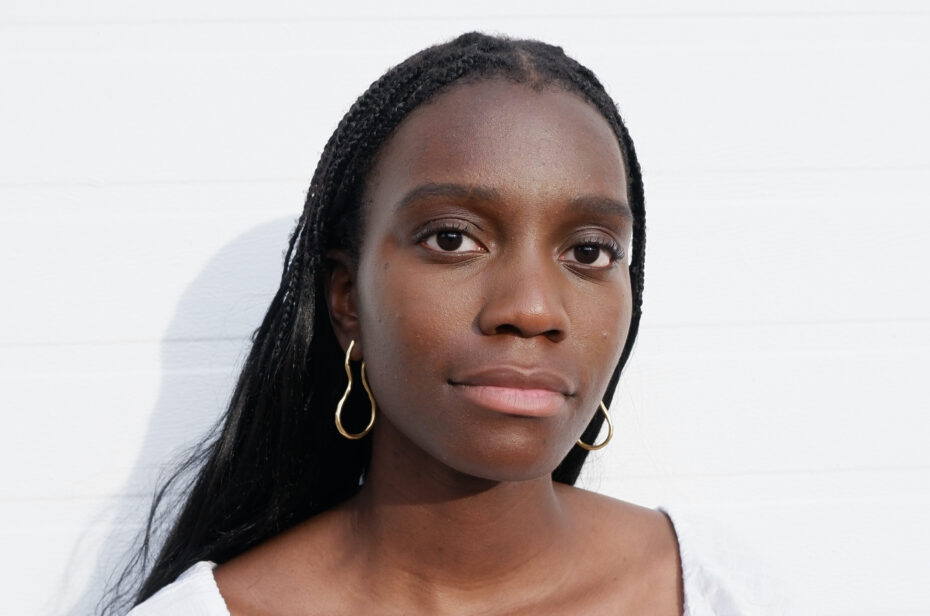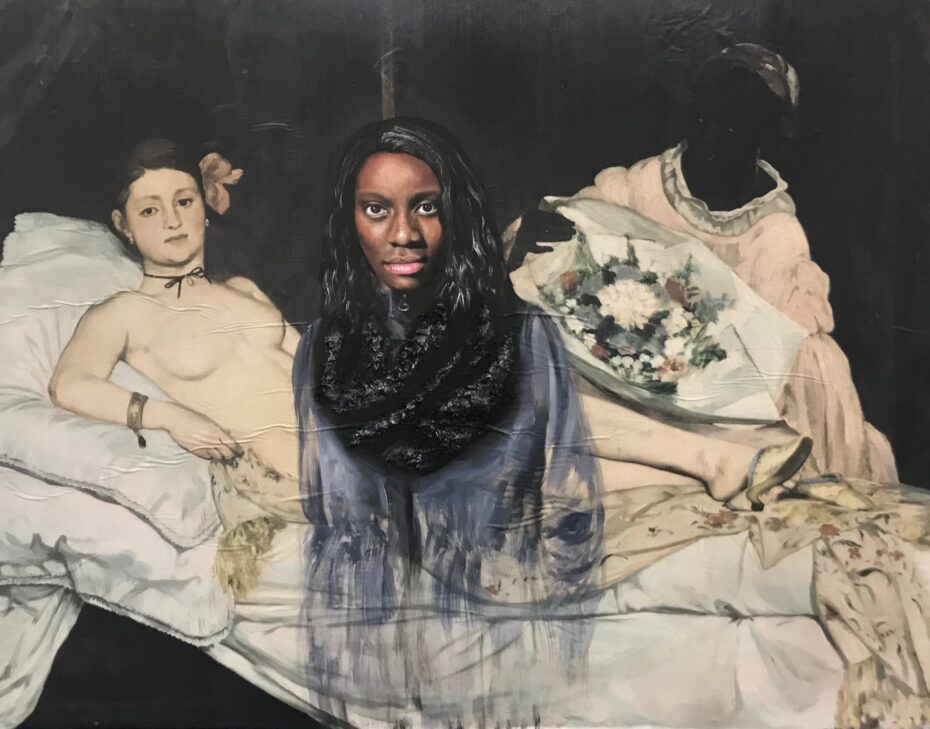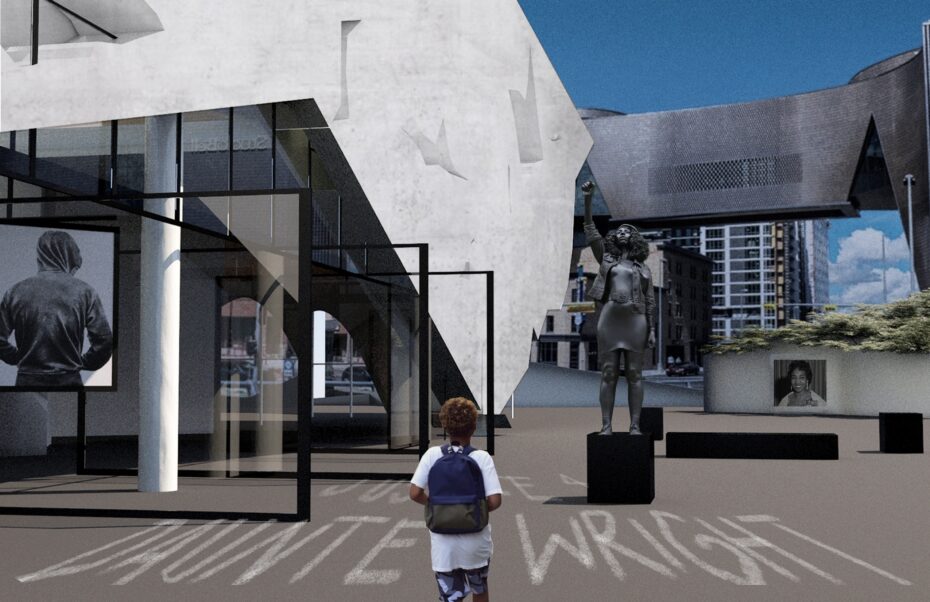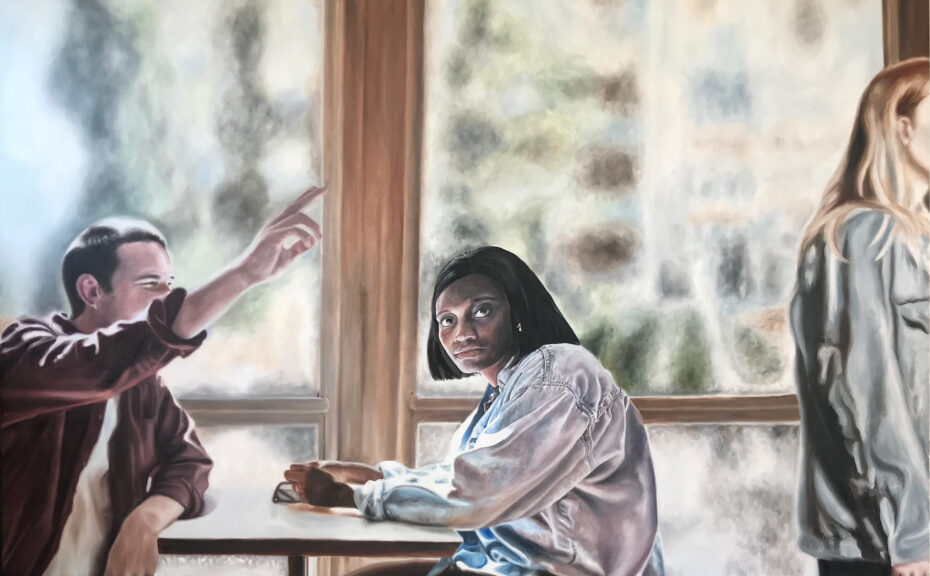
Earlier this year, six Ontario universities launched the Indigenous and Black Engineering and Technology (IBET) Momentum Fellowship, a project aimed at addressing the systemic barriers that exist in STEM fields for Indigenous and Black scholars and providing support and increased opportunities for those wanting to pursue Ph.D. degrees. Since then, IBET has expanded to include 12 partnering institutions, including McGill University.
Destiny Kirumira is McGill’s inaugural recipient of this landmark fellowship. An accomplished visual artist and scholar, Destiny began her doctoral studies in the Peter Guo-hua Fu School of Architecture this Fall. Her work attempts to reconcile the roots of racism in both art and architecture with an emphasis on Black narratives.
The Reporter spoke with Kirumira about her experiences in STEM and the arts, her research on Black Settlements in Canada, and the importance of preserving and celebrating Black spaces.
Tell us a bit about your background
I was born in Germany and lived there until I was about 9, so I grew up around beautiful, vibrant architecture. Being immersed in that space and having relatives and family friends that were architects really inspired me, and I decided early on to become an architect. As a kid, if you see someone that looks like you doing incredible work, you’re excited, right?
When my family moved to Canada, my main goal was to pursue architecture and return to Germany, but when I went back to visit, I felt very unsafe as a Black person. This was a transcendent moment because I didn’t have that experience growing up — I had heard certain things, but when you’re young, you don’t always register them as racism. I was also very shielded and protected by my parents. It was very heartbreaking since it was a big dream that I had, but I didn’t want to start my educational journey in a space where I didn’t feel safe.
I went on to do my Bachelor’s in math and physics as I really enjoyed the subjects and could use them to pursue architecture. A lot of people are shocked by this because there are not a lot of Black women in STEM, and I was the only Black woman in my class at the time, which is an experience I’ve unfortunately gotten accustomed to my whole life.

During my undergrad studies, I did a minor in art to further explore the painting and drawing hobby I had my whole life. I started getting interested in Black representation in art and was repeatedly told to change my interest towards something more acceptable to the White art world. As a way of responding to these racist suggestions, I decided to paint works that juxtaposed historical paintings of Black people with more contemporary portraits of them as a way of exposing the problematic depictions of Black people throughout art history. I knew I wanted to paint great portraits of Black people, because they were so rare. Whenever we see Black people in paintings, they are always depicted as either the help or as shadows, barely having any features and never being named. The conversation that came out of it really helped me understand the expression of my own identity within art, but my art wasn’t seen as valuable, which really made me question my own value as a person and as an artist.
So, when I went on to do my Master’s at the University of Calgary, I was hopeful that I would get to dissect the Eurocentric standards that were the norm and really question how we’re building our buildings and who they are being built for. It wasn’t until my final year that I explored these ideas by designing a community centre for a historically Black community in downtown Calgary. Unfortunately, I wasn’t supported by my professors, but despite this, I felt that these topics were important enough to continue pursuing them in my own independent research into the history of Black Architectures here in Canada. I couldn’t find a lot of research pertaining to these architectures unfortunately and decided to use my research to hopefully fill this gap in Canadian architectural history. I then decided to apply to the architecture Ph.D. program at McGill University because of its history in supporting research focused on social issues as well as its proximity to the Black Settlements in Montreal.
What will be your Ph.D. research focus?
The architecture of Black Settlements in Canada from 1780-1930 [when there were] large influxes of Black migrants who had moved to Canada in hopes of having a better future. The first thing I hope to try and understand is their spatial experiences up to that point, which is rooted in where they moved from and what types of architectures they were exposed to. Next, I hope to understand more about their cultural backgrounds, and then how that was manifested into the architecture of the settlements.

An example from some of the research I’ve already started looking into is the design of schools in some Black settlements. Many of the churches were converted into schools to be able to facilitate a safe space for kids to learn in because a lot of the neighbouring schools were still segregated and therefore weren’t accessible to Black kids. The reason some of the churches were also built to look like houses, or to kind of be camouflaged, was a way of safeguarding them because a lot of their spaces had been vandalized, torn down, or burned. So, to me, that’s an example of such an intentional and intricate design decision. My hope is to really understand the design decisions they made and honestly champion and celebrate them.
What I have before me is a really complex issue. These spaces existed, but many of them have been demolished. One example is the African Nova Scotian community of Africville. The community was destroyed in 1960 to make room for industrial development. The community was forcibly removed and the former residents of Africville were scattered. But again, it’s the same story of the city not putting money or resources into the community, deeming it unsafe, and then demolishing it. This is a clear example of erasure of Black presence within a space, and it’s a serious problem still exists. It’s systemic, and obvious to me why this research hasn’t been done, but it just highlights why it’s so important to do now.
What do you hope to achieve with your work?
I want to be able to design Black spaces, and not from a place of “I know the answer,” but “we can find the answer together.” I need this research to be able to understand as a designer the decisions I should be making as well as how to listen to a community.
An outcome of my thesis will be to create paintings depicting a lot of these spaces, as well as interpretations and reinterpretations of what the future could look like. It’s really important to capture them, to make them transcend time in a way because they’ll be forgotten otherwise. It’s a way of sharing information and keeping it alive.
Making this information more accessible to me is really crucial, and I hope that years from now, this becomes basic knowledge and that it’s nothing spectacular to celebrate Black architecture in Canada. The fact that some of them still exist is incredible, and the fact that we can visit some of them is so important. This thesis is an opportunity to share what I’m finding with as many people as possible, and the fact that I paint helps in communicating it in a more transparent and honest way.
Which direction would you like to see architecture design and theory move towards?
Architecture has been very singular in many ways. If you look at its roots and the buildings we deem as significant, who has gotten credit for designing them? Mostly White men. Architecture is such a powerful tool, but what’s difficult is no one person has all the answers, and we are all coming at it with our own experiences. That’s why it’s so important for us to think about the users and listen to the needs of the community before the designing even begins. I think the goal of architecture should never be to inflate our own egos, but rather to try and solve some of the problems before us.
An example of listening to a community could be looking at what adjustments to the design can be made if we consider their specific experiences. For example, Black people are over-policed and surveilled, so what design features can be changed to prevent the feeling of being watched in public spaces? What are their interactions with being in a public space, and how can we design to either change those interactions or protect them?
Living in a space that’s not designed for you impacts how you think about yourself and your relationships with others, and so there needs to be a willingness to listen on the part of architects.
How does it feel to be the first IBET Momentum Fellowship recipient at McGill?
It’s surreal and very, very humbling.
It’s significant for the Faculty of Engineering to support Black and Indigenous scholars because we’re still so underrepresented in STEM. I can’t even describe the things that have taken for me to get to this point. Generations of people, including my parents, have worked tirelessly to even put me in a position to have access to this opportunity. And so IBET is a chance for other people and for future generations to get these opportunities as well.
When I think about the value of this Fellowship, for one, it’s incredible to have people look at my work and see worth in it without me having to explain it further. It’s rare for me to come into a space and for my voice to be the first one people are interested in listening to as a Black woman, or even as woman in general. But I’m not the only person that has the answers and I don’t even have the answers quite yet. There are so many other Black community members, leaders, and scholars I hope to learn from and listen to as I go along on my journey.
I can’t wait to see the other fellows who get it in the years to come and even meet other current fellows throughout Canada. That, to me, is the real value of it – connecting others and giving opportunities to people who normally wouldn’t get them.


Congratulations Destiny !
wow 🤩, congratulations 🥳 Destiny Kirumira on your IBET Momentum Fellowship. Your story tells the bigger story for many of us who arrived this Fall Semester for our Studies. By the way, is your origin Ugandan? I’m from Uganda, pursuing my PhD in Social Work under the McCall MacBain Scholarship. My research is on Refugee Integration and self reliance & I’m passionate on social policy, social Justice, Social Change & forced migration in the global south, specifically SSA. I was a DAAD – PPGG Masters Student in Germany. We might need to have a conversation on Germany, Uganda and learn… Read more »
Congratulations, Destiny! 😁✨👏